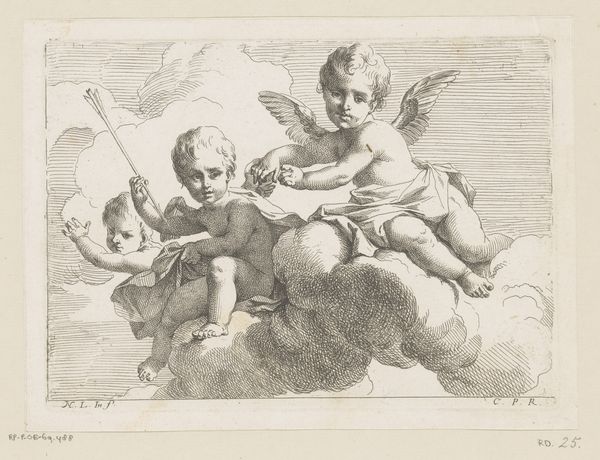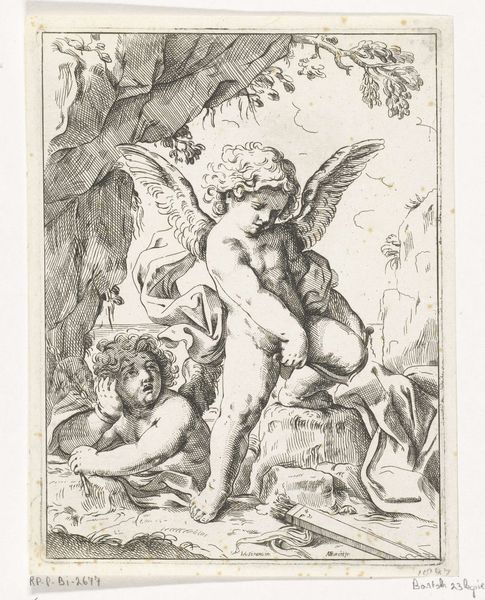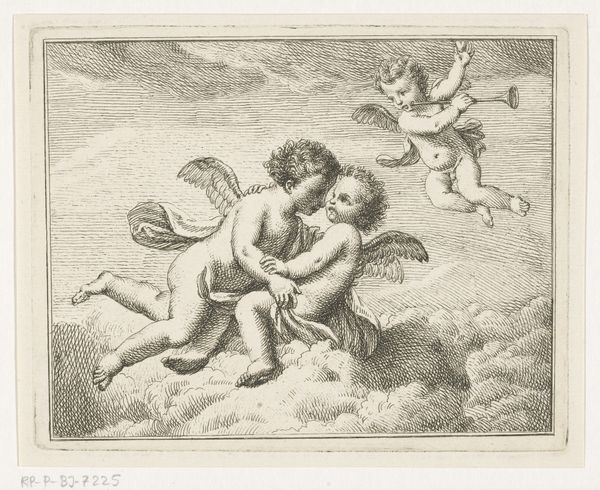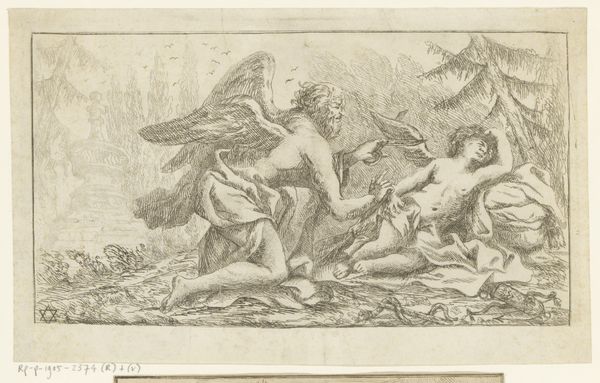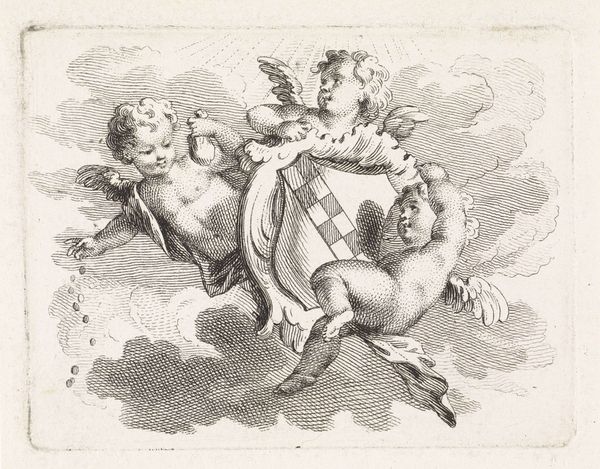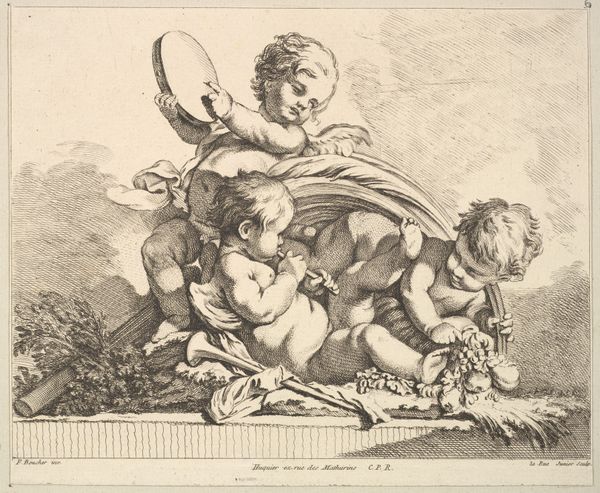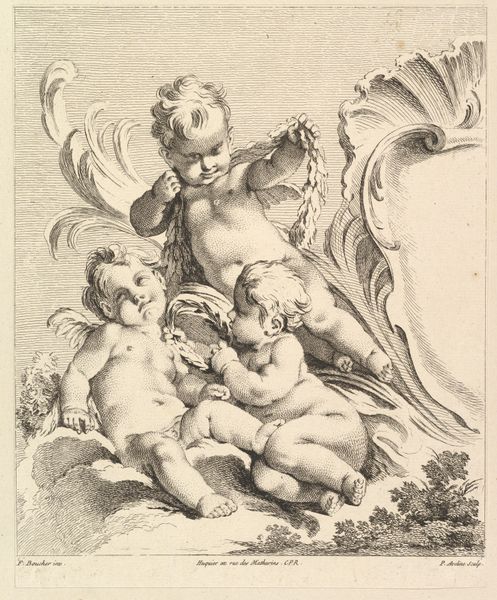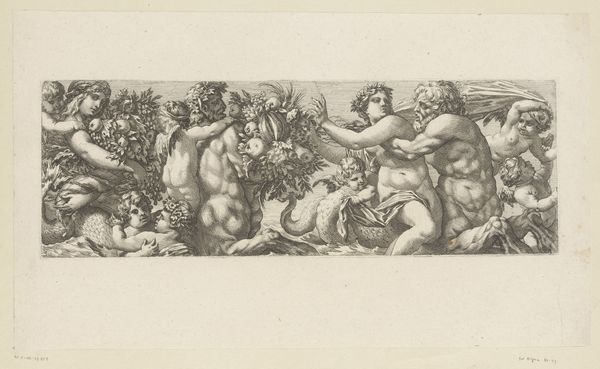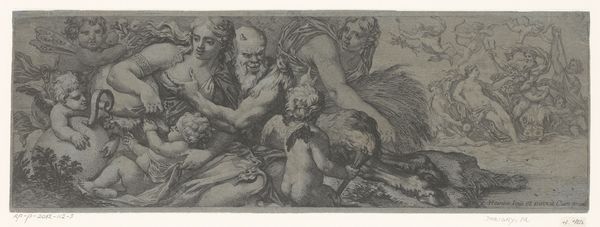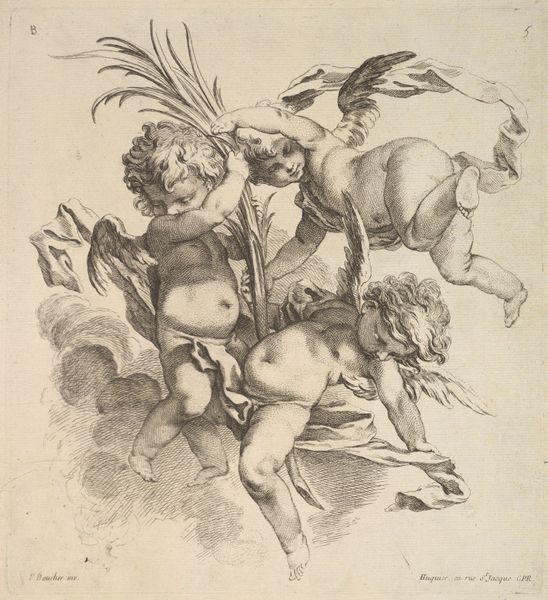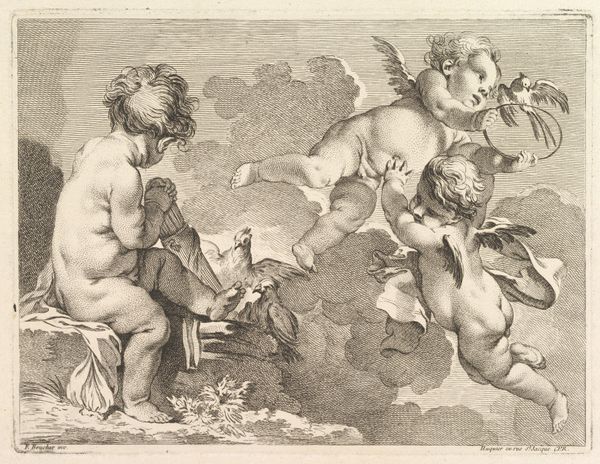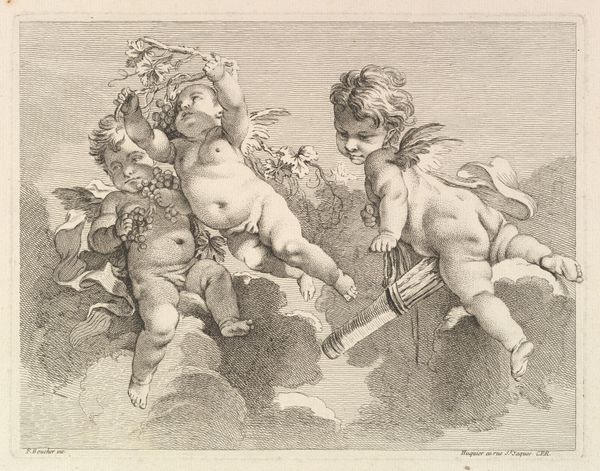
engraving
#
baroque
#
pen illustration
#
pen sketch
#
pencil sketch
#
figuration
#
pen-ink sketch
#
history-painting
#
engraving
Dimensions: height 58 mm, width 108 mm
Copyright: Rijks Museum: Open Domain
Editor: Here we have "Putti op dolfijn," or "Putti on Dolphin," an engraving created sometime between 1683 and 1733. There's something playful about the image, the cherubic figures contrasting with what appears to be quite a monstrous dolphin. How do you interpret the symbolism and context of this work? Curator: That contrast you notice is quite telling. In the Baroque era, the dolphin was a recurring symbol, often linked to salvation and guidance, particularly for sailors. But it’s also tied to wealth and power. Who would you say, at the time, was commissioning art that utilizes these particular allegories? Editor: Presumably wealthy patrons, perhaps even royalty? I imagine that impacts not only the style of the work, but the messaging it sends as well? Curator: Exactly. Engravings like these weren’t always grand statements. Sometimes they were incorporated into elaborate decorative schemes for private residences. Think about how this imagery could be deployed to project an image of enlightened, benevolent authority, especially in an era grappling with political and social upheaval. What impression does that leave you with, regarding art's role back then? Editor: It shows how deeply intertwined art was with constructing narratives of power. This wasn't just decoration; it was actively shaping perceptions. Curator: Precisely! It also makes me consider who had access to these images, furthering a top-down dynamic. Editor: Thinking about this piece now, I see that even a seemingly simple engraving carries a heavy weight of socio-political implications. Curator: And it demonstrates how even decorative arts can play a role in the grand narratives of history.
Comments
No comments
Be the first to comment and join the conversation on the ultimate creative platform.
